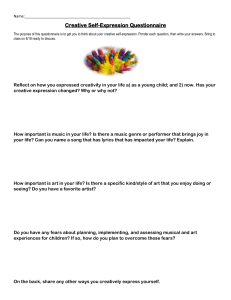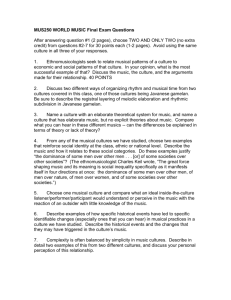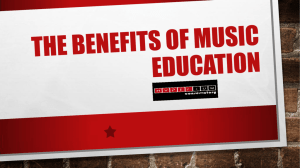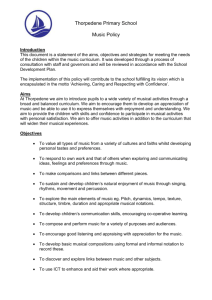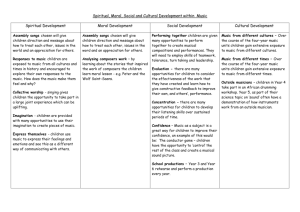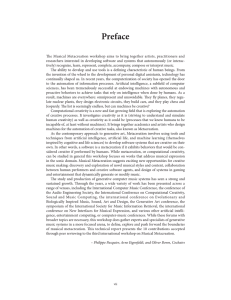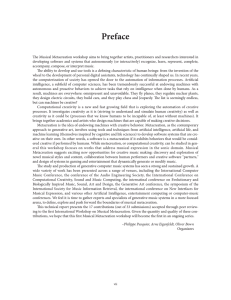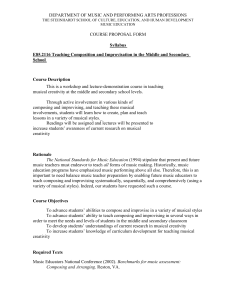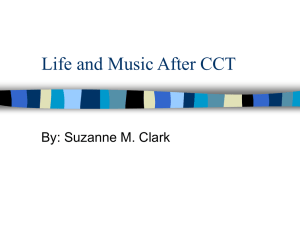Music and Movement
advertisement
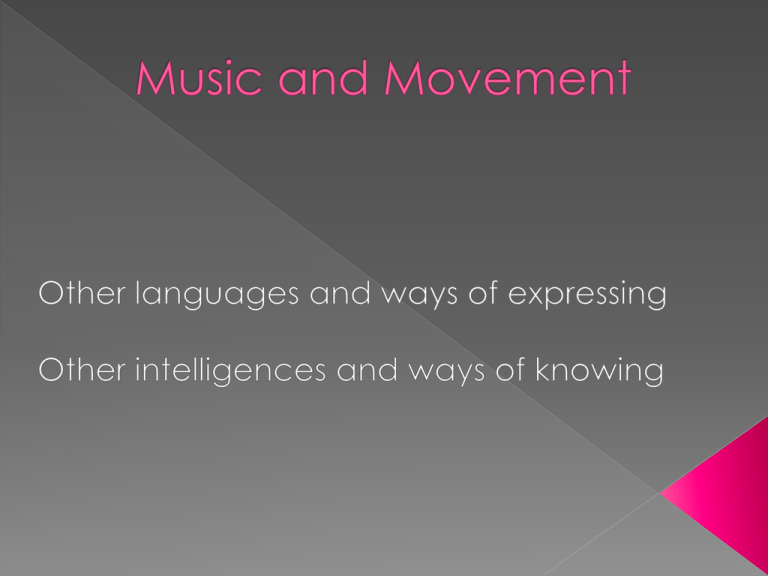
• • • • • • • Listening to music Singing Instrumentation Dancing Movement activities Athletics Exercise Many scientists consider music instinctive Music is a form of communication and comfort for and with the infant Early exposure, even in the womb, known to develop: mathematical abilities memory language and literacy is one of the 8 intelligences of Howard Gardner the symbols, sounds, rhythms, creative expression Affects and expresses moods and emotions • Improves listening, attentive and memory skills • Provides another form of self-expression and creativity • Helps language use/appreciation and literacy • Stimulates mathematical abilities • Introduces culture/cultures and aesthetics • Encourages socialization • Introduces concepts • Allows for right brained learning • Provides foundation for use of tools • Singing Can actually help stuttering Can also help depression Children should be introduced to all types of music • Quality music • Diverse music from national and international cultures • Not just for routines and academics • • • • • Math – rhythms, sequences and brain stimulation Science – sounds, music of nature and instruments Social studies – culture, cultures and cooperation Language – appreciation, symbols and lyrics Art – creativity, instrument creation and mood Teachers have to be better educated 1. 2. 3. 4. On the value of music On various ways to do music in the classroom On the technicalities of music On playing music, ideally NAEYC has taken the position that music education should be considered “basic” education because of its importance Music should be integrated throughout the curriculum • • • • • With movement With drama With art With other particular activities At free play for mood and content • But not continuously or loudly • • • At group time In routines (including waiting) At naptime Longer term social impact of early music exposure • • • • Constructive use of time Career possibilities Stress management Alternatives to negative behaviors Stages of Music Development In infancy to early toddlerhood comfort, connection and communication In toddlerhood to preschool: musical babble In later preschool to school age: beginning of musical aptitude without sufficient exposure the aptitude can atrophy Movement The body is the first musical instrument Sense of rhythm is developed first physically Music is felt by the body Movement to music aids in motor development Important for physical fitness Balances so much sitting in school Also aids in self-awareness, self-expression and self-comfort According to Piagetian theory would lead to language and cognitive development Benefits of movement activities Motor coordination 2. Body awareness 3. Self-expression 4. Spatial development 5. Kinesthetic intelligence 6. Speed and retention of learning 7. Concentration/attention span 8. Creativity 9. Health 10. Talents 1.
